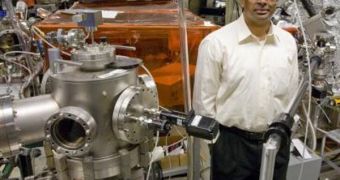Scientists at the US Department of Energy (DOE) Lawrence Berkeley National Laboratory (Berkeley Lab) have recently moved ahead of the “pack” in terms of piezoelectric research. The effect refers to traits that certain types of ceramics and composite materials have, of producing electrical potential when mechanical forces are applied onto them. Until now, most of the devices incorporating piezoelectric components were rich in the dangerous chemical lead, which is toxic to humans. Scientists at the Berkeley Lab managed to bring a lead-free alternative to the market, which holds great promise.
The words of the day at the laboratory seem to now be bismuth ferrite. The chemical features a perovskite crystal structure, which means that it has alternating layers of oxygen/bismuth atoms and oxygen/iron atoms. When strain is applied on the material, the two types of layers move on top of each other, producing the piezoelectric effect. The latter can also be significantly increased, the team reports, if the strain is applied in the direction of its crystal planes. This process is called epitaxial strain. “We have demonstrated that epitaxial strain can be used to create a large piezoelectric responses in thin films of bismuth ferrite. The piezoelectric effect is reversible when the strain is relaxed,” the leader of the new research, Ramamoorthy Ramesh, explains. He is a materials scientist at the Berkeley Lab. The expert also holds two more appointments, in the Departments of Materials Science and Engineering, and of Physics, at the University of California in Berkeley (UCB). His new paper, entitled “A Strain-Driven Morphotropic Phase Boundary in BiFeO3,” appears in the latest issue of the top journal Science. “In principle, the strain-driven piezoelectric effect we have observed in bismuth ferrite should be generic to other lead-free perovskites as well, akin to chemically driven effects that are now well established in the manganites, cuprates and relaxors,” the scientist adds. But the new accomplishment may have other advantages besides creating lead-free piezoelectric devices. “Inducing materials into such a schizophrenic state can be the key to obtaining exotic behavior,” Ramesh adds.
Berkeley lab leads the way
hot right now

 14 DAY TRIAL //
14 DAY TRIAL //